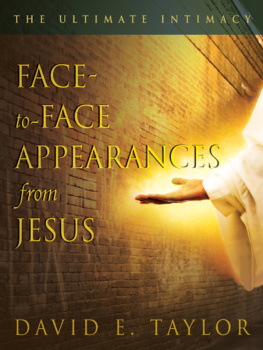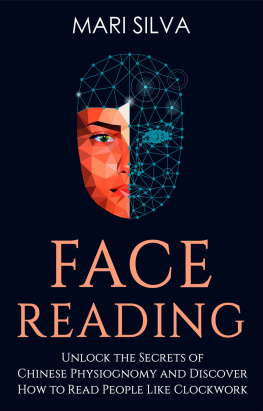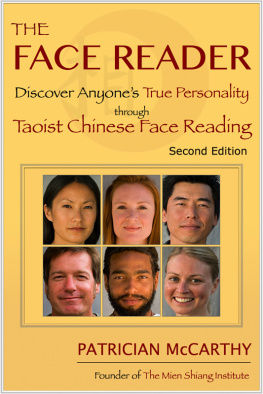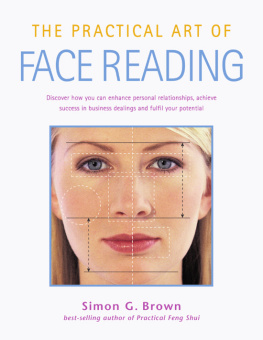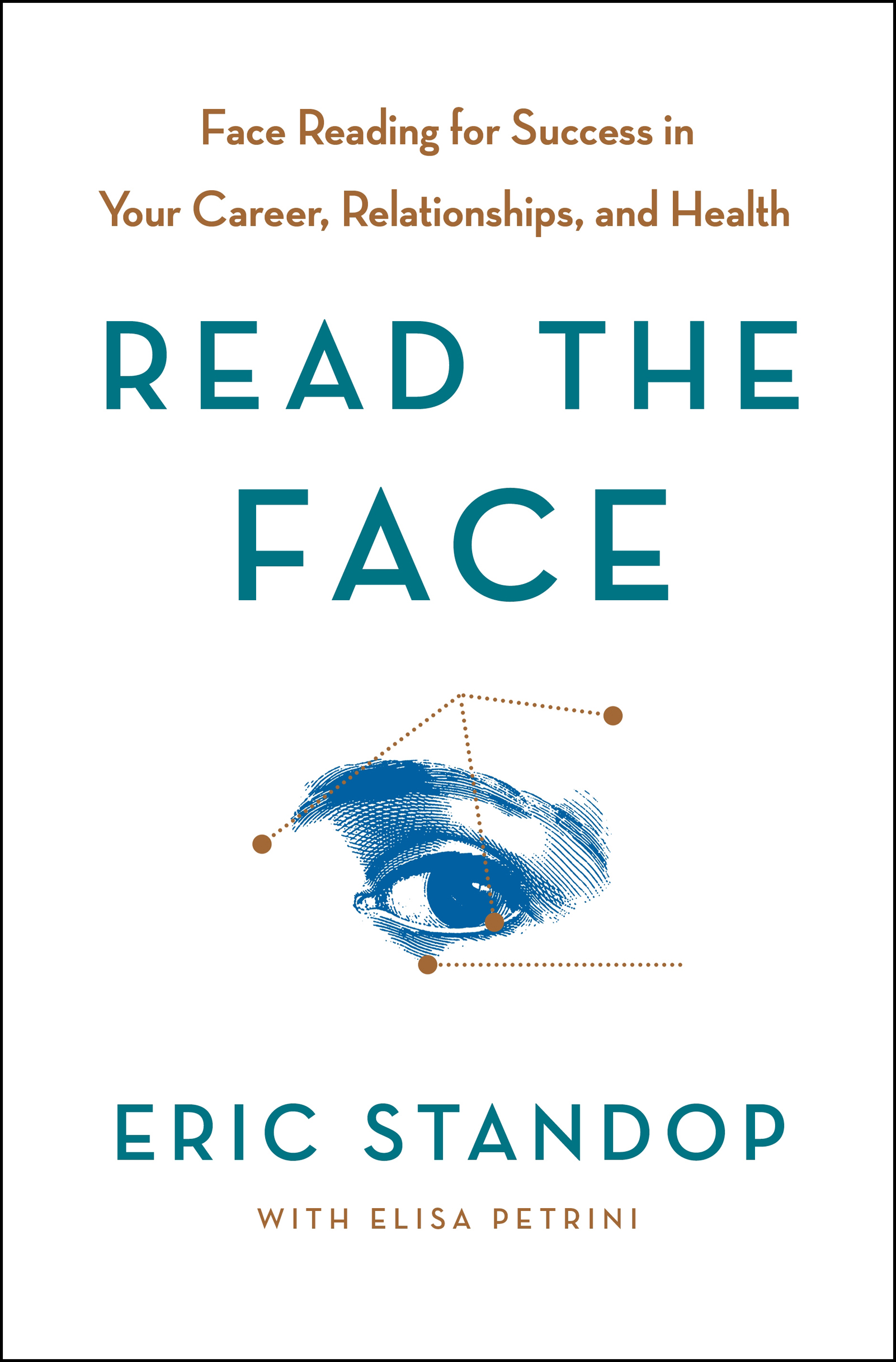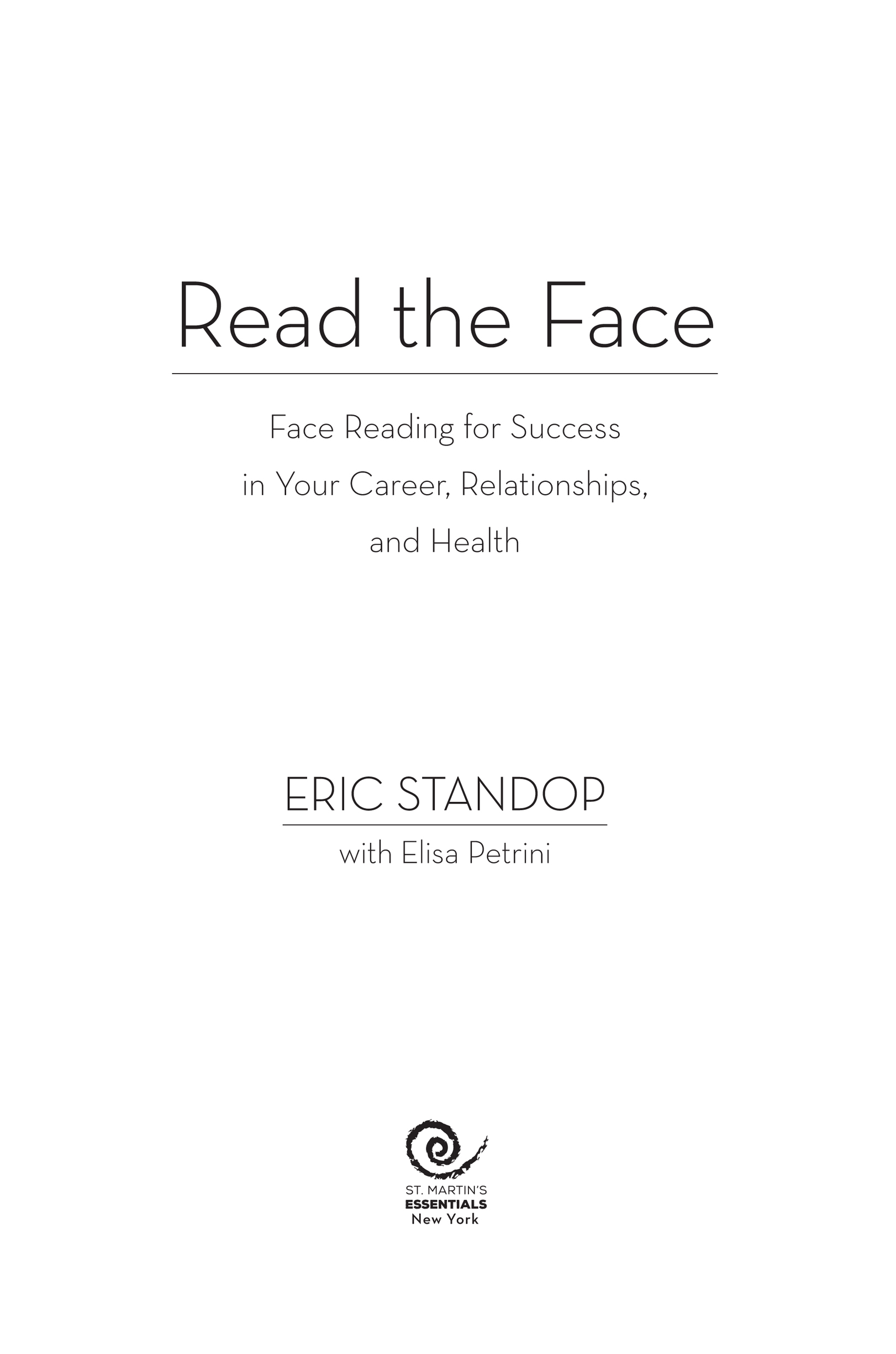The author and publisher have provided this e-book to you for your personal use only. You may not make this e-book publicly available in any way. Copyright infringement is against the law. If you believe the copy of this e-book you are reading infringes on the authors copyright, please notify the publisher at: us.macmillanusa.com/piracy.
We see that the internal character of a man is often expressed in his exterior appearance, even in the manner of his walking and in the sound of his voice. Likewise the hidden character of things is to a certain extent expressed in their outward forms.
God has given you one face, and you make yourselves another.
Nature gives you the face you have at twenty. Life shapes the face you have at thirty. But at fifty, you get the face you deserve.
You have three faces. The first face, you show to the world. The second face, you show to your close friends and your family. The third face, you never show anyone.
I am a face reader. And so are you.
This skill is so critical to our survival that we have dedicated brain circuits for processing facial information. Imaging can pinpoint the exact place in the brain where our face-reading network lies. Scientists are still exploring how these neural circuits develop, but most believe that were born face readers, at least to some extent. From the moment of birthbefore its eyes can even focusa baby is wired to seek out faces. Within hours, a baby can tell its mothers face from a female strangers, and in just a few months it grows expert at identifying sex, race, emotions, and other basic traits.
This face-to-face connection is the childs first language. It is so potent that newborns are drawn even to facelike configurations, a row of two (or three or more) objects above a single one. But they do not respond to the same configurationor even a human faceupside down.
I once had a funny experience at a corporate retreat, where Id been invited to address some two hundred software engineers. I had to laugh when the executive director warned that theyd introduce me as a life coach, since face reader sounded too esoteric. But in fact I was planning to talk about lifeabout what our faces (and those of others) reveal about the way we live.
I began my speech by drawing a large oval on the whiteboard, with a short vertical line in the middle and a horizontal one below it. Then I stood back and invited comments.
Minutes passed, with everyone silent. I was getting nervous, but then, at last, a hand shot up.
What do you see? I asked.
The OFF button on the remote control, the guy said.
What I had drawn, of course, was not an OFF button but the outline of a face, with the vertical line representing the nose and the horizontal one the mouth. But since my drawing didnt have eyes, no one could guess what it represented. Thats how deeply were imprinted with the two-objects-above-a-single-one model of the human countenance. Our instant interpretation of that image as a face is the reason that emojisjust a couple of dots and a linecan convey a world of meaning.
In time, when a newborn can distinguish features, it will literally see the love in its mothers eyes, her pupils enlarged with emotion. Thats why teddy bears have black button eyestheyre all pupiland probably why, as studies show, men are attracted to women with big pupils. Centuries ago, to be alluring, Italian women would dilate their pupils with the extract of a plant that got the name beautiful lady, or belladonna.
This attraction to large pupils is primal and unconscious. As we grow up, we consciously gather data on others from multiple sources: their tone of voice, words, body language, hairstyles and clothing, and even the context in which we see them. We may be less aware of our face-reading powers, but the brain circuits producing them continue to fire, sparking gut feelings and intuitions.
In fact, research shows that fusiform gyrus, the specific area of the brain triggered by faces, continues to develop from infancy on. Other complex visual-processing systems, like place recognition, are more static. As we mature, we grow to recognize the much wider range of faces necessary to navigate our broadening social networks. We also get increasingly better at distinguishing similar faces. By adulthood, we range from limited to gifted in our ability to identify faces, but on average, we remember and recognize some 20 percent of the people weve seen.
Roughly 2.5 percent of Americans fall at the low end of the identification spectrum because of prosopagnosia, or face blindness, which may be inborn or acquired though trauma or diseases like Alzheimers. People with prosopagnosia have trouble distinguishing familiar faces, though they can readily identify other objects. The title character in the famous book by neurologist Oliver Sacks, The Man Who Mistook His Wife for a Hat, has a form of prosopagnosia. He identifies his wife by her voice and other people in his life, like his brother, by such specific features as big teeth. In middle age, Sacks himself, whod never recognized his own reflection in a mirror, finally confronted his own face blindness.
The opposite of face blindness is super-recognition, an extraordinary gift for identifying faces. The estimated 2 percent of people who are super-recognizers may memorize and recognize as many as 80 percent of the faces they see. New Scotland Yard employs an elite super-recognizer squad to catch criminals by studying footage from Londons million-plus surveillance cameras. Finding a needle in the haystacka person filmed at a crime scene who has, say, a mug shot in the systemrequires the uncanny ability to pick out a face on grainy, low-resolution video and match it with that of the known offender. Detective Chief Inspector Mick Neville, who created the unit, calls face recognition the third revolution of forensics, after fingerprints and DNA.
His squad has had surprising success. After civil unrest in 2011, computer face-recognition software could spot only one rioter from 200,000 hours of footage, while a single super-recognizer identified 190. According to published statistics, 73 percent of the squads identifications have led to criminal charges. But what troubles rights advocates is that 13 percent, even after independent review by a second super-recognizer, have led to false arrests.
An inevitable problem in facial analysiswhether human or electronicis that its only as accurate as its database. Humans, from birth onward, can best identify and read faces of the ethnicity we see most. White people tend to be better at recognizing white faces, black people at recognizing black faces, Asians at recognizing Asians, and so on.
Face-recognition technology, though vastly improved since 2011, shows the same bias. In a 2018 study of the capacity to read gender from a photo, three leading systemsthose of Microsoft, IBM, and Megvii of Chinadetected faces of white or light-skinned men with an error rate of less than 1 percent. But when it came to spotting darker female faces, Microsofts system had an error rate of 21 percent, while IBMs and Megviis rates approached 35 percent.
Also in 2018, the American Civil Liberties Union (ACLU) tested Amazons system, used by some police departments, by running photos of all members of Congress against 25,000 published mug shots. No less than twenty-eight lawmakers were identified as criminals. Most were African American or Hispanic, including such well-known figures as congressmen John Lewis of Georgia and Bobby L. Rush of Illinois. The finding led the ACLU to condemn face-recognition technology as flawed, biased, and dangerous.


